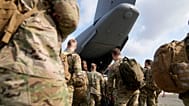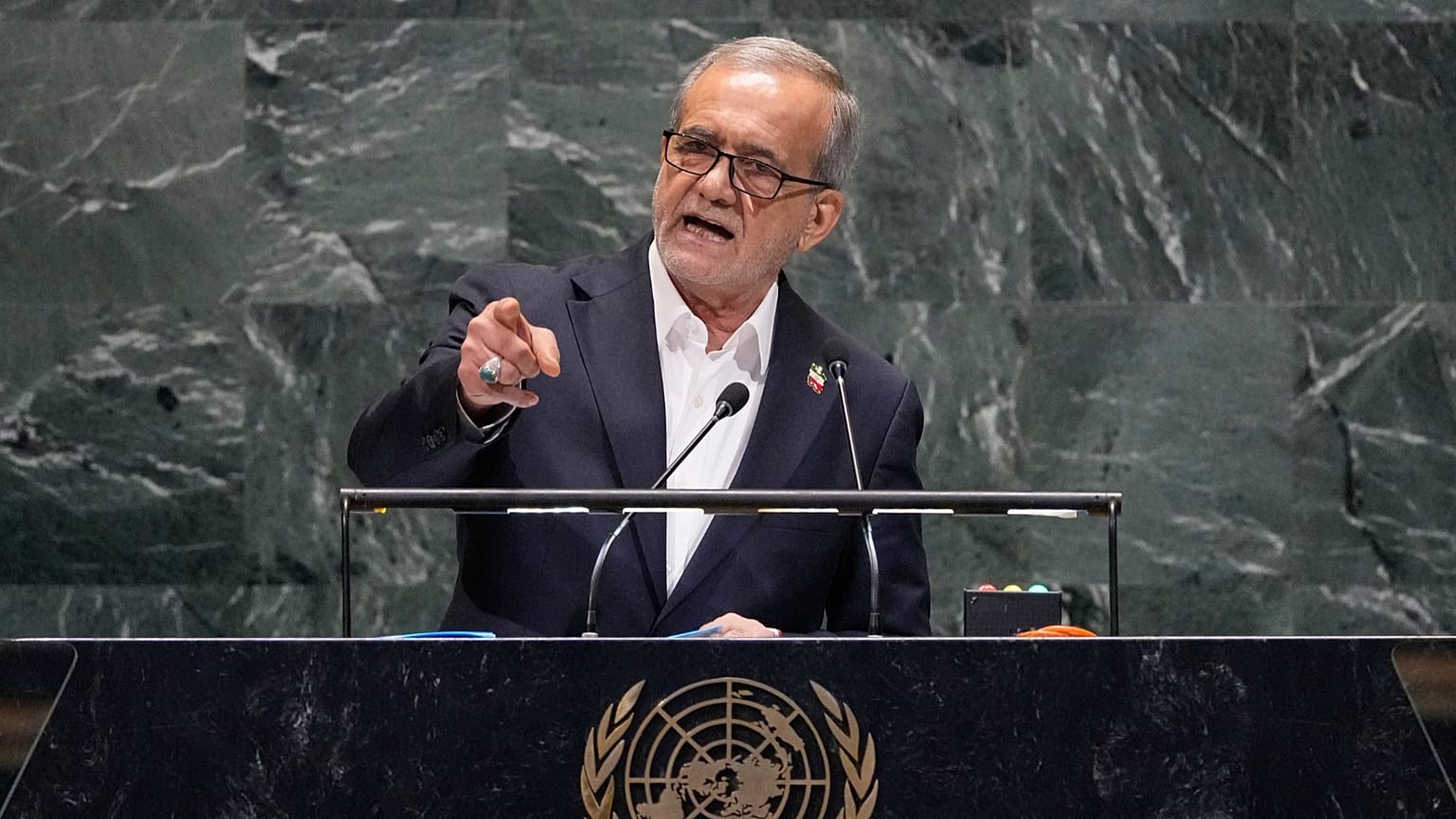Iranian President Masoud Pezeshkian announced on Sunday that his country will rebuild its nuclear facilities “with greater vigour”, as he reiterated Iran's unwillingness to build a nuclear weapon.
Iran's President Masoud Pezeshkian vowed on Sunday to rebuild Tehran's damaged nuclear facilities, which were targeted in June in precise US attacks, as Washington accused Iran of attempting to develop and acquire nuclear weapons.
Pezeshkian's announcement comes in an apparent challenge to US President Donald Trump, who in the days that followed his country's attacks on Iran, threatened to bomb the country again if it attempted to restart its setback programme.
The United States attacked Iran's nuclear facilities in June during the 12-day war with Israel, which Washington - and Israel - say was part of a deliberate programme to acquire nuclear warheads.
The US dropped 14 GBU-57 Massive Ordnance Penetrators (MOPs), roughly 14,000 kilograms each - known as bunker buster bombs - on Tehran's three main nuclear facilities, Fordow, Natanz and Isfahan in a stealth operation, codenamed "Midnight Hammer".
Trump claimed the attacks, carried out by seven B-2 Stealth Bomber aircraft, each carrying a payload of two bunker busters, "completely obliterated" Iran's facilities, a claim downplayed by Iran's Supreme Leader, Ayatollah Ali Khamenei, who said Trump was exaggerating the damage done.
Tehran has however repeatedly insisted, before and after the US attacks, that its nuclear programme is civilian in nature, and pursues purely civilian goals.
Pezeshkian renewed these claims as he spoke to a gathering of senior nuclear industry executives during a visit to the Atomic Energy Organisation of Iran on Sunday.
"All these programmes are for solving people's problems, for treating diseases and for the health of society," said the Iranian president.
“Science is in the minds of our scientists, and there will be no problem with destroying buildings and factories; we will build again and with more vigour.”
Washington-Tehran tensions
Trump has stated recently during a visit to Israel and Egypt to sign the ceasefire agreement in Gaza that he brokered that “without bombing Iran's nuclear facilities, a ceasefire would not have been possible.”
The US president's remarks were met with sharp criticism from Ayatollah Khamenei, who slammed its premise as “false, false and bullying.”
After nearly a month of absence from public appearances, Khamenei, in a meeting with athletes and medallists of the International Science Olympiad, further criticised Trump's statements, and encouraged Iranian youth to pursue their ambitions in these fields.
“It's okay, think about it. But what do you do, if a country has a nuclear industry, you should and should not argue about it, what does it have to do with the United States whether Iran has nuclear facilities or does not have a nuclear industry?” said the Supreme Leader.
While tensions between the two foes persists, whispers can be heard through the grapevine about a resumption in talks between Tehran and Washington, regarding Iran's nuclear programme.
Reports circulated in a number of foreign media outlets, including US outlets, that the White House was actively attempting to re-engage in dialogue with Iran.
Though it was never directly confirmed by both American and Iranian officials, Tehran's foreign ministry spokesperson, Fatemeh Mohajerani, said that they had "received word about it".
Observe the movement around the uranium deposit site
International Atomic Energy Agency (IAEA) chief Rafael Grossi also recently told the Associated Press that “Tehran does not appear to be actively enriching uranium," adding that the UN nuclear watchdog had “recently observed new movements in Iran's nuclear facilities.”
“Yet nuclear material enriched to the 60 percent level still remains in Iran. That is one of the main topics of our conversations, because we need to be able to visit there again to make sure these materials are still in place and have not been used for another purpose,” he added. This is a very important issue,” noted Grossi.
The IAEA chief said agency inspectors have observed movements around sites where uranium stockpiles were being held.
He stressed that in the absence of direct access, the agency would inevitably rely solely on satellite imagery, but urged Iranian officials to allow the agency to visit and monitor the sites on the ground, after Iran suspended cooperation with them following the instatement of western sanctions at the UN level in September.
New nuclear facility in the mountains
The Center for Strategic and International Studies (CSIS), a Washington-based think tank, said in a recent report that based on recent satellite imagery, there is no sign of a resumption of activity or reconstruction at the sites in Fordow, Natanz and Isfahan.
The report made it clear that US strikes have slowed uranium enrichment and processing at these facilities, noting that "it has completely stopped.”
According to the CSIS, while activity at the former sites has stopped, Iran has accelerated construction of a facility deep in the “Kolang Gaz La” mountain region, located about 1.6 kilometres south of Natanz.
After a 2020 fire in the centrifuge assembly hall at the Natanz facility, Aliakbar Salehi, the incumbent head of Iran's Atomic Energy Organisation announced that Iran would build a new facility “in the heart of the mountain," a project that began the same year.
Satellite imagery analysis conducted by the CSIS, sampling data from 30 June to 30 September this year, Iran has allegedly established a security wall around the entire site and have engaged in significant construction projects on the site's eastern, western and southern parts.















